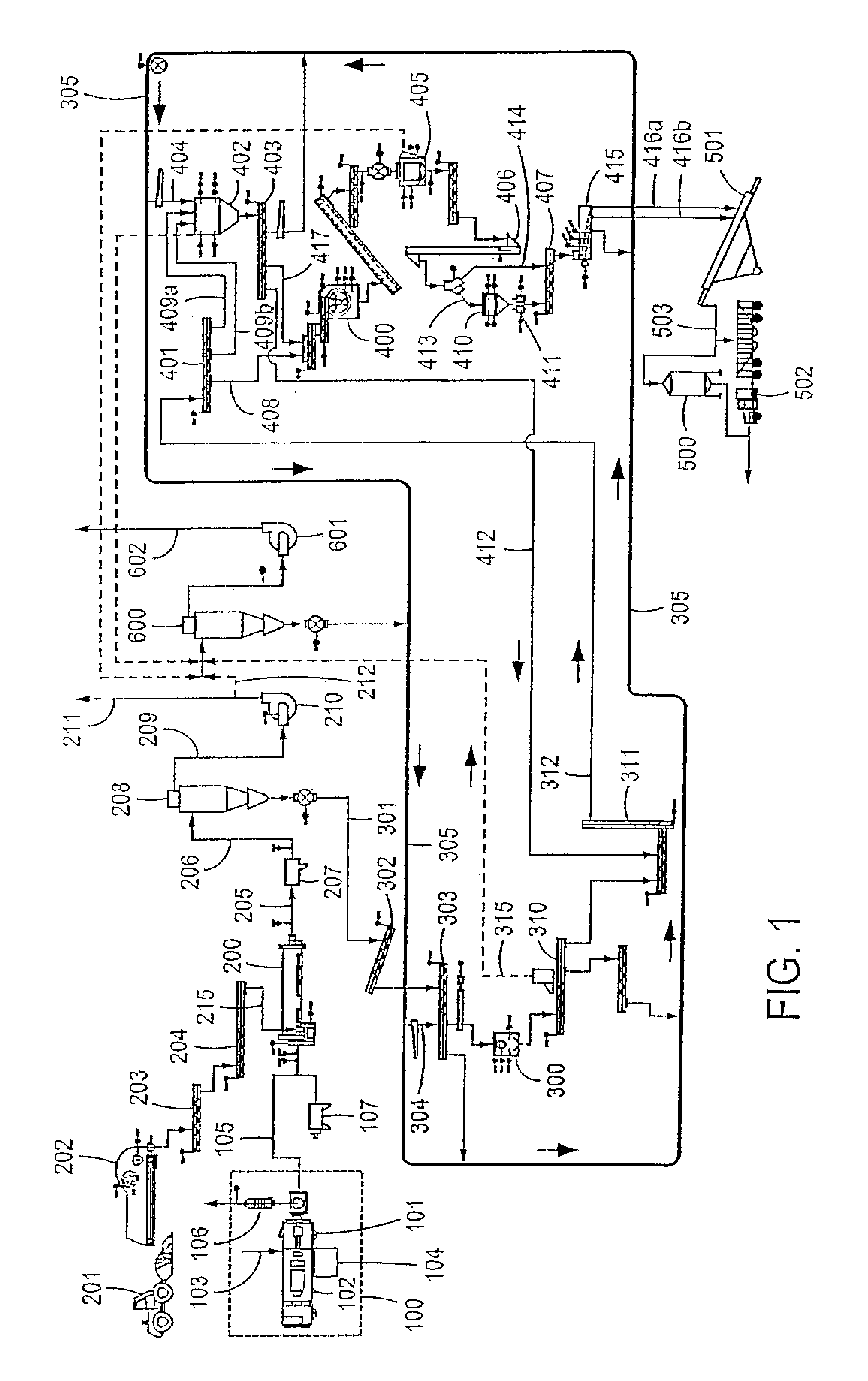Process and system for drying and heat treating materials
a technology of heat treatment and process, applied in the direction of combustion types, furnaces, centrifuges, etc., can solve the problems of increasing waste streams produced by these facilities, increasing the difficulty and cost of disposal, and increasing the concentration of local waste and other problems, to achieve the effect of increasing the number of waste streams, increasing the difficulty and cost of disposal, and increasing the amount of was
- Summary
- Abstract
- Description
- Claims
- Application Information
AI Technical Summary
Benefits of technology
Problems solved by technology
Method used
Image
Examples
Embodiment Construction
[0024]This invention provides an economical, efficient and simplified solution to the increasingly severe problem of environmental pollution caused by waste material and gases from industrial operations. Prior art methods and systems provided to date either are not sufficiently effective in conversion of such waste material and gases to a safe, environmentally acceptable form or are not adaptable to be economically feasible for small as well as large commercial operations. Other problems exist with many of the prior art systems, including uneconomical to operate, failure to decontaminate and failure to prevent air pollution (or in fact causing additional environmental problems in the operation of the process).
[0025]Examples of the prior systems and their deficiencies include the following. Digestion processes, whether aerobic or anaerobic, are slow, inefficient and produce a sludge that must be disposed of, typically in a landfill. Digestion or composting systems designed to produce...
PUM
| Property | Measurement | Unit |
|---|---|---|
| temperature | aaaaa | aaaaa |
| temperature | aaaaa | aaaaa |
| exhaust gas temperatures | aaaaa | aaaaa |
Abstract
Description
Claims
Application Information
 Login to View More
Login to View More - R&D
- Intellectual Property
- Life Sciences
- Materials
- Tech Scout
- Unparalleled Data Quality
- Higher Quality Content
- 60% Fewer Hallucinations
Browse by: Latest US Patents, China's latest patents, Technical Efficacy Thesaurus, Application Domain, Technology Topic, Popular Technical Reports.
© 2025 PatSnap. All rights reserved.Legal|Privacy policy|Modern Slavery Act Transparency Statement|Sitemap|About US| Contact US: help@patsnap.com



